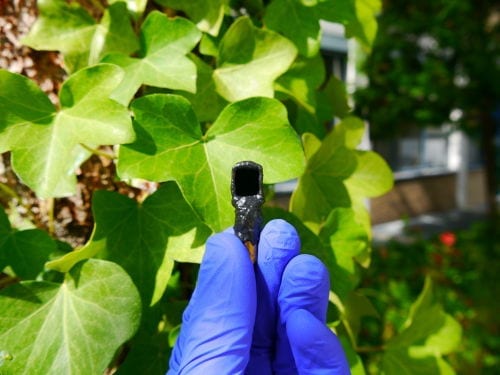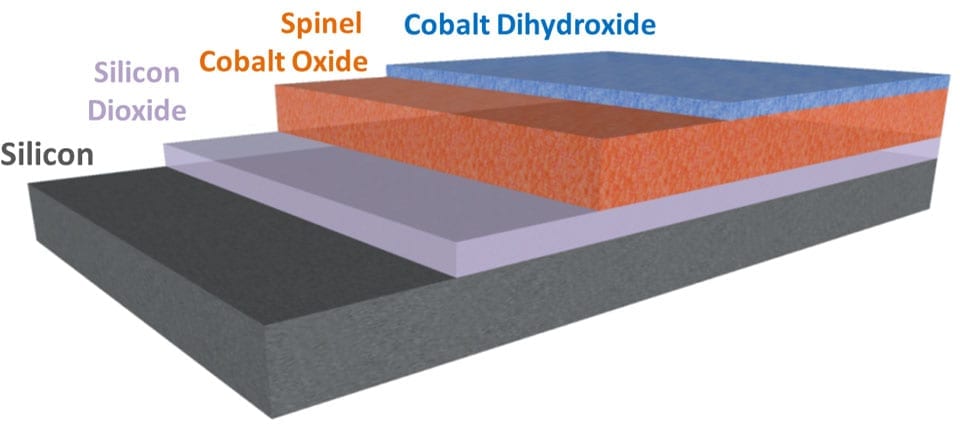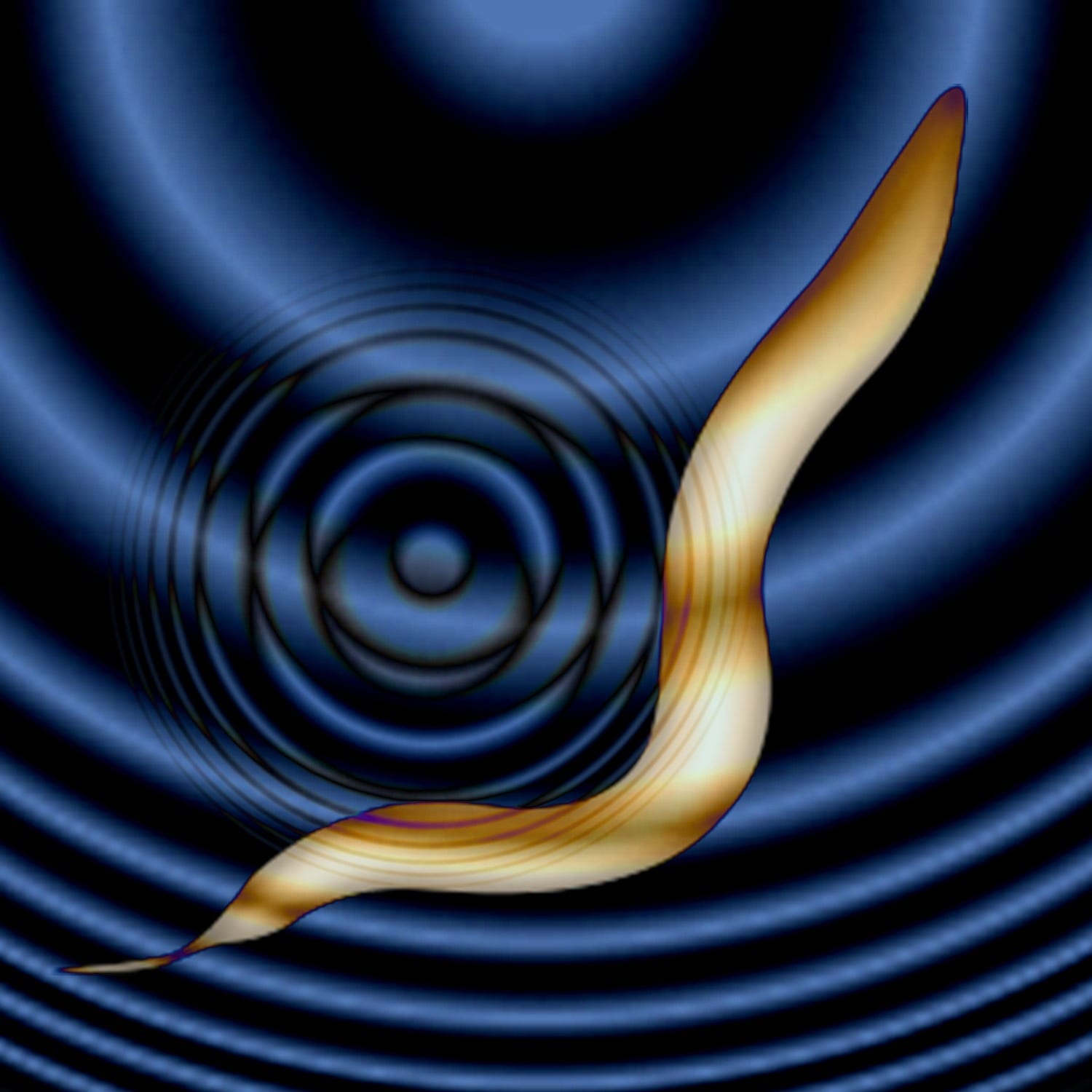
An international team has now succeeded in considerably increasing the efficiency for direct solar water splitting. They are using a tandem solar cell whose surfaces have been selectively modified. The new record value is 14 % and thus considerably above the previous record of 12.4 % held by the National Renewable Energy Laboratory (NREL) in the USA, broken now for the first time in 17 years.
Researchers from the Institute for Solar Fuels at the Helmholtz-Zentrum Berlin, TU Ilmenau, the Fraunhofer Institute for Solar Energy Systems ISE in Freiburg and the California Institute of Technology (Caltech) participated in the collaboration. The results have been published in Nature Communications.
Solar energy is abundantly available globally, but unfortunately not constantly and not everywhere. One especially interesting solution for storing this energy is artificial photosynthesis. This is what every leaf can do, namely converting sunlight to “chemical energy”. That can take place with artificial systems based on semiconductors as well. These use the electrical power that sunlight creates in individual semiconductor components to split water into oxygen and hydrogen. Hydrogen possesses very high energy density, can be employed in many ways and could replace fossil fuels. In addition, no carbon dioxide harmful to the climate is released from hydrogen during combustion, instead only water. Until now, manufacturing of solar hydrogen at the industrial level has failed due to the costs, however. This is because the efficiency of artificial photosynthesis, i.e. the energy content of the hydrogen compared to that of sunlight, has simply been too low to produce hydrogen from the sun economically.
Record value now exceeded
Scientific facilities worldwide have therefore been researching for many years how to break the existing record for artificial photosynthesis of 12.4 %, which has been held for 17 years by NREL in the USA.
Core component: Tandem Solar Cell
Now a team from TU Ilmenau, HZB, the California Institute of Technology as well as the Fraunhofer ISE has
considerably exceeded this record value. Lead author Matthias May, active at TU Ilmenau and the HZB Institute for Solar Fuels, processed and surveyed about one hundred samples in his excellent doctoral dissertation to achieve this. The fundamental components are tandem solar cells of what are known as III-V semiconductors. Using a now patented photo-electrochemical process, May could modify certain surfaces of these semiconductor systems in such a way that they functioned better in water splitting.
Stability improved
“We have electronically and chemically passivated in situ the aluminium-indium-phosphide layers in particular and thereby efficiently coupled to the catalyst layer for hydrogen generation. In this way, we were able to control the composition of the surface at sub-nanometre scales”, explains May. There was enormous improvement in long-term stability as well. At the beginning, the samples only survived a few seconds before their power output collapsed. Following about a year of optimising, they remain stable for over 40 hours. Further steps toward a long-term stability goal of 1000 hours are already underway.
Next goals visible
“Forecasts indicate that the generation of hydrogen from sunlight using high-efficiency semiconductors could be economically competitive to fossil energy sources at efficiency levels of 15 % or more.
Read more: Hydrogen from sunlight: new efficiency record for artificial photosynthesis
The Latest on: Artificial photosynthesis
[google_news title=”” keyword=”Artificial photosynthesis” num_posts=”10″ blurb_length=”0″ show_thumb=”left”]
via Google News
The Latest on: Artificial photosynthesis
- Biochemistry Students Tackle the Conference Circuiton May 1, 2024 at 11:44 am
The start of the spring semester also brought an onslaught of conferences and presentations for many students and faculty across campus. Hiram’s emphasis on small class sizes and one-on-one ...
- Green Hydrogen in Transportation: Fueling the Clean Mobility Revolutionon May 1, 2024 at 7:35 am
Green hydrogen is emerging as a clean fuel for transportation, promising to reduce emissions and revolutionize the energy sector.
- Level Up Your Leafy Friends With the Best Grow Lights for Thriving Plantson April 30, 2024 at 2:33 pm
Fully covering your plants with grow lights mimics the sunshine without the worry of obstructions or shadows, promoting photosynthesis, the process in which plants use sunlight to synthesize foods ...
- The 8 Best Grow Lights for Countertop Herbs, Small Gardens, and Helping Indoor Plants Thriveon April 30, 2024 at 2:33 pm
Narrow spectrum lights are noted for serious gardeners and plant nerds who need to support different stages of development. Blue-light spectrum (450-490 nm) grow lights are used for early-stage growth ...
- Boosting crop colors with gene editing can improve weed controlon April 30, 2024 at 1:53 am
At the heart of this progressive strategy lies the concept of modifying the composition of crops with gene editing ...
- The Advantages of Going Solaron April 29, 2024 at 9:33 am
This article explores the numerous advantages of adopting solar energy, both from an environmental standpoint and its capacity to influence economic and personal development.
- Have the world’s coral reefs already crossed a tipping point?on April 29, 2024 at 1:45 am
Earlier this month, the world officially entered its fourth — and probably worst — mass coral bleaching event in history, according to the National Oceanic and Atmospheric Administration and the ...
- Highlights From Fuorisalone At Milan Design Week 2024on April 27, 2024 at 11:06 am
At Fuorisalone during Milan Design Week designers and exhibitors explored themes around high and low tech, the environment, and the importance of injecting a touch of magic to design.
- The Business School Entrepreneurs Tackling Sustainable Developmenton April 22, 2024 at 5:16 am
Meeting the climate challenge will require new leaders who understand the scale and urgency of the challenges, and bring practical solutions to addressing the problems.
- Alien Life Could Be Purple Instead Of Popular Green, New Study Suggestson April 19, 2024 at 3:04 am
Imagine looking up at the sky and seeing a world unlike any you've ever known. Instead of the familiar green landscapes of Earth, this planet is covered in shades of purple. It sounds like something ...
via Bing News











